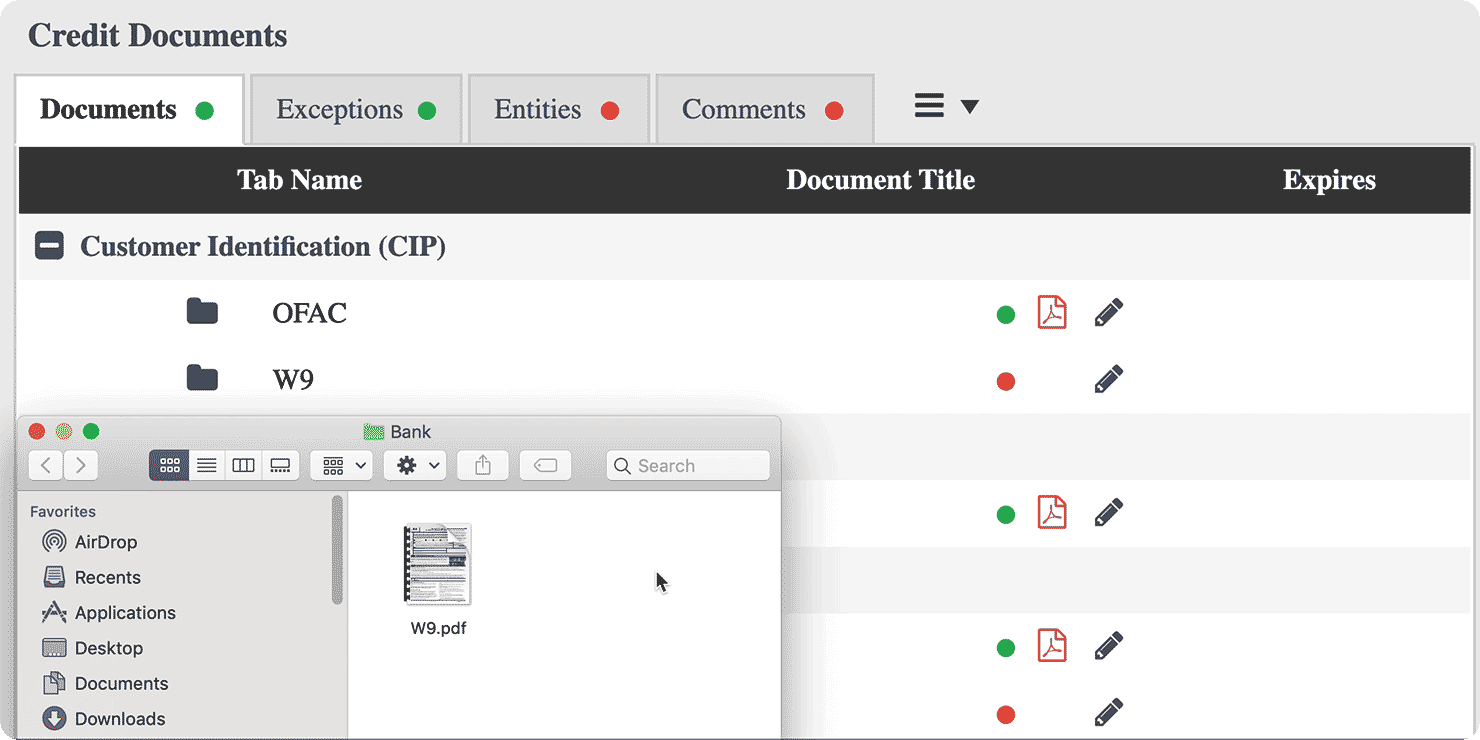Exception Tracking Terms that Commercial Lenders Should Know
Financial institutions looking to expand their commercial loan portfolios must be particularly mindful of the need for efficient and effective exception tracking. However, it can seem like there’s a lot of terminology to know.
In this post, we’ll discuss several important exception tracking terms, as defined in Alogent’s banking glossary.
What is an Exception?
At Alogent, we like to think of an exception as something that requires attention because predefined requirements were not met. For financial institutions, exceptions usually fall into one of the following categories:
- Incomplete information, such as a loan document with a missing signature
- Insufficient data, such as an inventory report that provides partial information about a customer or member’s operations
- Expiring and missing documents, such as an insurance policy on a piece of commercial real estate
- Required actions, such as tasks that staff should have performed during account creation
Proactive exception management is a key component for maintaining compliance and ensuring safety and soundness. Implementing reliable exception management processes can also help financial institutions avoid unnecessary friction with account holders. Making multiple requests for the same financial statement—even after a customer or member has submitted it—erodes confidence and results in negative experiences. Maintaining accurate, reliable exception reports helps prevent these types of unpleasant (and embarrassing) situations.
Tracking Exceptions
Exceptions don’t just go away on their own. There’s a lot of tracking involved with exception management, especially for financial institutions with large commercial loan portfolios. One commercial loan could involve dozens of documents and hundreds of pages of information.
That’s why document tracking can quickly become one of the most time-consuming (and frustrating) parts of exception management. Tracking down missing documents involves more than just walking down to the records room or searching on your network drive. In many cases, it requires considerable outreach and follow-up with customers, members, insurance companies, or other stakeholders. Financial institutions use notice letters, which can be printed and mailed or sent via email, to request missing documentation.
However, notices are occasionally overlooked, misplaced, or ignored—leading to more work to resolve exceptions. Providing an easy way to capture exception comments makes life easier for staff and demonstrates the financial institution’s good faith efforts to resolve exceptions. Exception comments can also be useful for documenting decisions that fall outside of the financial institution’s loan policy.
Standalone Ticklers vs. Document Management Systems
Financial institutions solve their exception tracking challenges in a variety of ways, including:
Spreadsheets: Financial institutions use a lot of spreadsheets, and tracking exceptions is no exception to the rule. Home-grown spreadsheets or free downloadable templates—like TicklerTraxTM—provide a fast and low-cost option.
Ticklers: A tickler file is a paper-based or digital system that helps financial institutions remember to take action. Alogent’s Tickler Tracking System is a simple, effective tool that helps financial institutions efficiently generate tickler reports and move beyond spreadsheets.
Document Management Systems: Some document management systems, such as AccuAccount, bring together imaging and exception tracking under one roof. Exceptions clear automatically as documents are scanned or uploaded to the correct place in AccuAccount, saving time and reducing the chance for errors.

Need Help with Exception Tracking?
Contact Alogent to discuss your financial institution’s exception tracking needs or to schedule a software demo.
Be the first to know! Click below to follow us on LinkedIn for news and content updates!


